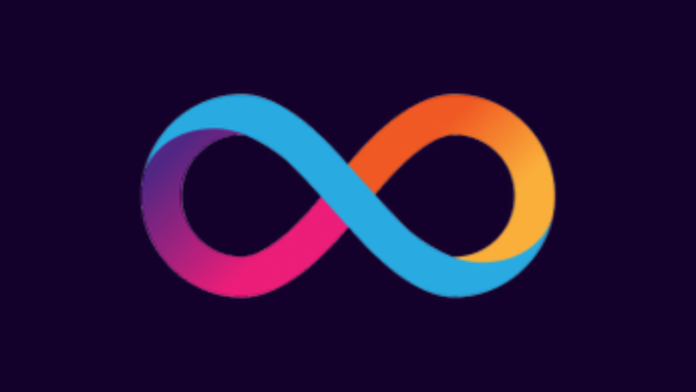DFINITY has scored a standout achievement this April, earning a place on the CVE Enrichment Recognition List—a badge few in the industry can claim, and none among its blockchain peers currently wear. The list, curated by the team behind the Common Vulnerabilities and Exposures (CVE) programme, highlights organisations that go above and beyond when it comes to disclosing security vulnerabilities. Out of thousands of tech players worldwide, only 249 made the cut. DFINITY is the only major blockchain project in sight.

The CVE list isn’t just another industry nod—it’s used by enterprise-level decision-makers when assessing whether to work with a vendor. It provides a measure of how seriously an organisation treats transparency around bugs and potential threats. DFINITY not only reports security vulnerabilities but also includes thorough details, with 98% of their disclosures meeting enrichment criteria. That means the reports contain complete information about severity, type, and relevant context, giving others the tools to assess risk accurately and respond quickly.
To put that into perspective, think about the other names that made the same list: Microsoft, Google, Amazon, Intel, Cisco, Adobe, IBM, Samsung. These are brands that have made a reputation from their technical rigour, and now DFINITY is being mentioned in the same breath. It’s a sign of maturity for the Internet Computer ecosystem and one that hints at a bigger play in the enterprise technology space.
What’s perhaps even more telling are the names that didn’t make the list. High-profile players in the crypto space—Coinbase, Binance, Ethereum, Solana, Cardano, Polkadot—are all absent. These are platforms with billions in assets, millions of users, and wide recognition, yet none has hit the mark when it comes to this level of security reporting. That leaves DFINITY in a rather exclusive position.
Security has always been a pain point for blockchain. The tech is new, rapidly changing, and complex. Hacks are common, from smart contract vulnerabilities to compromised bridges and phishing attacks. Users have long been asked to accept a certain amount of risk when interacting with decentralised platforms. But that approach doesn’t fly when you’re courting enterprise users. Businesses want to know what risks exist and how they’re handled. A security-first approach isn’t a bonus; it’s a basic requirement.
DFINITY’s approach suggests it understands that better than most. Rather than waiting for someone else to highlight issues, or only publishing limited disclosures, the team goes out of its way to document vulnerabilities clearly and share them with the broader tech community. That kind of transparency takes time, effort, and a willingness to be held accountable. It also requires confidence in the team’s ability to build secure systems in the first place.
And it’s not the first time DFINITY has taken the long road on security. The project has previously published extensive documentation on its Internet Computer architecture, cryptographic primitives, and boundary node security. It has pushed for formal verification methods and been open about its use of decentralised governance to approve protocol upgrades. The CVE recognition is simply the latest in a pattern of responsible, security-focused decisions.
The timing is also interesting. As the broader tech world explores ways to integrate decentralised infrastructure into traditional systems, questions about resilience, compliance, and risk mitigation become increasingly important. Enterprises evaluating blockchain-based services are unlikely to be swayed by hype or speculative price charts. They’ll be asking questions about data handling, update policies, recovery mechanisms, and yes—how a vendor responds to security issues.
The CVE Enrichment Recognition List provides a rare and publicly auditable metric for that kind of due diligence. It shows which organisations aren’t just patching their software, but contributing to the global conversation on what went wrong and how it can be prevented in future. Being listed signals that DFINITY is participating at that level—offering detailed information others can act on, not just ticking boxes.
For developers building on the Internet Computer, this can also be a quiet confidence booster. Many are creating applications meant to live indefinitely on-chain. They’re looking for a platform that won’t cut corners or vanish when things go wrong. Knowing that the core team is committed to high standards of disclosure and detail adds a level of reassurance. It means that if vulnerabilities are discovered, the information will be complete and usable—not vague or hidden behind PR spin.
There’s also a long-game advantage here. As regulation continues to evolve around crypto and blockchain, the organisations that demonstrate responsibility, transparency, and a proactive approach to risk will have an easier time integrating with regulated industries. From finance to healthcare to logistics, the sectors looking at decentralised tech need providers they can trust—and being part of the CVE enrichment list is a way to earn that trust through action rather than promises.
It’s worth noting that this isn’t the type of recognition you can apply for or buy your way into. The CVE list is compiled based on actual contributions, judged by whether the disclosures include rich, technical detail. It rewards consistency and quality. So DFINITY didn’t just get lucky. It built up a track record of properly reporting security bugs, and someone noticed.
For the crypto sector, the absence of other major players might serve as a quiet wake-up call. Security reporting has often taken a back seat to new features, tokenomics, and community growth. But if crypto wants to graduate from a speculative playground into the infrastructure of tomorrow’s internet, it’ll have to raise the bar—and not just in theory. Standards matter. And DFINITY is showing what it looks like when a blockchain project actually meets them.
It also reinforces a broader point: decentralisation doesn’t mean a lack of responsibility. If anything, the opposite should be true. The more distributed a system is, the harder it becomes to intervene after something goes wrong. That makes preemptive clarity even more essential. With detailed CVE submissions, DFINITY is showing that a decentralised network can still be accountable and security-conscious at the level of global tech giants.
For holders of ICP, DFINITY’s native token, this is a signal that the project is building for longevity, not just short-term gain. In an industry often obsessed with buzz and price action, a focus on infrastructure and security maturity can seem boring. But for institutional adoption, boring is good. It’s what gets you meetings in boardrooms and trials in test environments. It’s what keeps your tech stack from being flagged as a risk during procurement.
So while many crypto projects are still battling over narrative and visibility, DFINITY is making gains in a more practical and arguably more important direction. It’s not trying to shout louder. It’s showing its work. And now that work has been recognised on a list usually reserved for household names in enterprise tech.
That’s the kind of move that tends to matter later. When the spotlight shifts from hype cycles to infrastructure, from speculative trading to system reliability, having that track record could make all the difference. DFINITY now has it in writing.


